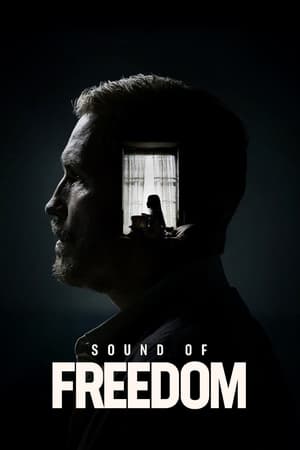Sound of Freedom: How a Powerful Film Shines Light on Human Trafficking

“Sound of Freedom” has sparked global conversations about human trafficking and child exploitation
Unveiling the Darkness: An Introduction
“Sound of Freedom” emerged in 2023 as more than just another cinematic release—it became a cultural phenomenon that thrust the horrific reality of human trafficking into the global spotlight. Directed by Alejandro Monteverde, this gripping real-life drama follows the journey of Tim Ballard, portrayed by Jim Caviezel, a former U.S. government agent who founded Operation Underground Railroad (O.U.R.) with a mission to rescue children from trafficking and sexual slavery.
What distinguishes this film from many others is its unflinching approach to a topic often shrouded in silence. By dramatizing actual rescue operations and depicting the harrowing experiences of trafficking victims, “Sound of Freedom” has forced audiences to confront uncomfortable truths about an industry that thrives in the shadows.
With its release coinciding with heightened global concern about child safety and exploitation, the film has transcended its role as entertainment to become a catalyst for awareness, action, and at times, controversy.
The Journey of Rescuing Innocence: Plot Overview
“Sound of Freedom” centers on Tim Ballard, who leaves his position as a Special Agent with Homeland Security Investigations to pursue a personal mission: rescuing children from sex trafficking networks. After successfully freeing a young boy in Colombia, Ballard discovers the boy’s sister remains captive, compelling him to embark on a dangerous mission beyond his official capacity.
The narrative follows Ballard and his team as they navigate the treacherous world of human trafficking, infiltrating criminal networks through carefully planned operations. The film portrays the psychological and emotional toll this work takes on those involved while highlighting the resilience needed to continue the fight against seemingly insurmountable odds.
“The title ‘Sound of Freedom’ epitomizes the hope of offering these innocent children a chance to hear the echoes of liberty and hope, finally breaking free from the chains of their captors.”
Through harrowing sequences of rescue operations juxtaposed with moments of hope and triumph, the film captures the complexity of combating human trafficking—a battle fought not just against criminals but against systems, poverty, corruption, and indifference.
Exposing a Global Crisis: The Reality Behind the Film
While “Sound of Freedom” dramatizes specific rescue operations, it reflects a devastating global reality. Human trafficking is among the world’s most lucrative criminal enterprises, generating estimated annual profits of $150 billion, with about $99 billion coming from sexual exploitation according to the International Labour Organization.
The film illuminates several harsh truths about human trafficking:
Scale of the Crisis
According to the International Labour Organization and Walk Free Foundation, an estimated 40.3 million people are victims of modern slavery globally, with 25% being children. Human trafficking affects virtually every country in the world, whether as source, transit, or destination.
Methods of Exploitation
The film accurately depicts how traffickers often leverage poverty, false promises of opportunity, and manipulation to ensnare victims. Children are particularly vulnerable to these tactics, especially in regions with economic instability and limited educational opportunities.
Institutional Challenges
The movie highlights the challenges faced by law enforcement, including jurisdictional limitations, corruption, and insufficient resources. These institutional obstacles often impede efforts to identify victims and prosecute traffickers effectively.
Psychological Impact
“Sound of Freedom” touches on the profound psychological trauma experienced by survivors, which can include PTSD, depression, anxiety, and dissociative disorders. Recovery often requires comprehensive long-term support services that are frequently underfunded.
Awakening Society: The Film’s Impact on Public Awareness
“Sound of Freedom” has made a measurable impact on public awareness about human trafficking. According to the National Human Trafficking Hotline, there was a reported 1,800% increase in online exploitation reports since 2021, with a significant spike following the film’s release.
The film’s impact manifested in several key ways:
Increased Information Seeking
Google search data showed a dramatic increase in queries related to human trafficking, child exploitation, and ways to help combat these issues in the weeks following the film’s release. Anti-trafficking organizations reported unprecedented traffic to their educational resources.
Surge in Volunteers and Donations
Organizations like Operation Underground Railroad and the Polaris Project experienced significant increases in both volunteer applications and financial contributions. The “pay it forward” ticket campaign for the film resulted in 105% of purchased tickets being distributed, expanding the film’s reach.
Public Discourse
The film catalyzed discussions about human trafficking in mainstream media, social platforms, and educational institutions. Congressional screenings of the film helped elevate the conversation to policy levels, with lawmakers across the political spectrum acknowledging the need for enhanced anti-trafficking efforts.
Educational Integration
Universities, high schools, and community organizations began incorporating discussions about the film and human trafficking into their curricula and awareness programs. This educational component helps ensure that increased awareness translates to informed action.
Official Trailer
Watch the official trailer for “Sound of Freedom” below to get a glimpse of this powerful film:
The Film’s Narrative Approach: Strengths and Limitations
“Sound of Freedom” employs specific narrative techniques to communicate its message, with both strengths and limitations in its portrayal of human trafficking:
Strengths in Portrayal
Humanizing Victims
The film gives identity and voice to trafficking victims, portraying them as individuals with hopes, dreams, and futures—not merely statistics. This approach encourages audience empathy rather than detachment.
Avoiding Excessive Exploitation
While unflinching in its subject matter, the film generally avoids gratuitous depictions of abuse that could further exploit victims through their portrayal, focusing instead on emotional impact and rescue efforts.
Highlighting Systemic Challenges
The narrative successfully illustrates how trafficking networks operate within larger systems of corruption and poverty, suggesting that effective solutions must address these root causes.
Limitations and Criticisms
Simplification of Complex Issues
Some critics argue the film oversimplifies the complexities of human trafficking, potentially leading viewers to misconceptions about the nature and scope of the problem. The binary portrayal of “heroes and villains” may not capture the nuanced realities of trafficking networks.
Focus on “Rescue Narrative”
The film emphasizes dramatic rescue operations over the equally important but less cinematic aspects of prevention, survivor support, and systemic change. This approach may inadvertently suggest that dramatic interventions alone can solve trafficking problems.
Accuracy Concerns
Some details portrayed in the film have been questioned for accuracy. Tim Ballard himself has acknowledged that certain elements were “overreported” for dramatic effect, raising concerns about potential misinformation despite the film’s overall important message.
“While dramatized, ‘Sound of Freedom’ is a powerful movie with the ability to unite us on the global issue of human trafficking. With your newfound awareness gained from the film, knowing accurate information about child exploitation and human trafficking is the next step to effectively fight this unimaginable crime.” — Operation Underground Railroad
Beyond the Screen: Controversies and Conversations
“Sound of Freedom” has generated significant controversy alongside its awareness-raising impact, sparking debates about representation, methodology, and the politicization of human trafficking:
Political Polarization
The film became entangled in political discourse, with some viewing it through partisan lenses rather than as a humanitarian issue. This politicization risks undermining the universal concern that should surround child exploitation.
Methods of Anti-Trafficking Organizations
Some professional anti-trafficking organizations have raised concerns about the sting operation methods depicted in the film, questioning their long-term efficacy and potential to interfere with established law enforcement protocols.
Representation Concerns
Critics have noted that the film primarily presents trafficking through a “white savior” narrative framework, potentially overshadowing the crucial work done by local organizations and authorities in affected countries.
Secondary Exploitation
Some experts worry that sensationalizing trafficking stories, even with good intentions, risks causing secondary exploitation of victims and survivors whose traumas become entertainment, regardless of the film’s educational value.
These controversies highlight the complexity of addressing human trafficking through media and the importance of balancing awareness-raising with accuracy, sensitivity, and nuance. They also underscore the need for diverse perspectives in conversations about how best to combat trafficking and support survivors.
From Awareness to Action: How to Help
For viewers moved by “Sound of Freedom” and seeking to make a difference, there are numerous ways to contribute to anti-trafficking efforts:
Educate Yourself
Learn the facts about human trafficking from reputable sources like the Polaris Project, UNICEF, and the UN Office on Drugs and Crime. Understanding the complexities helps avoid spreading misinformation.
Support Organizations
Donate to established anti-trafficking organizations with transparent operations and financial accountability. Consider supporting local organizations that provide direct services to survivors.
Raise Awareness
Share accurate information about trafficking with your community. Host screenings and discussions of documentaries and films that accurately portray the issue.
Learn the Signs
Familiarize yourself with indicators of trafficking so you can recognize and report suspicious activity. The Department of Homeland Security’s Blue Campaign provides resources on recognizing signs.
Advocate
Support policies and legislation that address human trafficking, fund survivor services, and target demand. Contact your representatives about prioritizing anti-trafficking initiatives.
Ethical Consumption
Research the supply chains of products you purchase. Support companies committed to fair labor practices and transparency about their manufacturing processes.
Resources for Reporting
- National Human Trafficking Hotline: 1-888-373-7888 or text “HELP” or “INFO” or “BEFREE” to 233733
- Cybertipline for Online Child Exploitation: report.cybertip.org or 1-800-843-5678
- FBI Human Trafficking Task Forces: tips.fbi.gov or contact your local field office
Beyond the Credits: A Lasting Impact
“Sound of Freedom” represents a significant moment in the ongoing effort to combat human trafficking. By bringing this issue from the shadows into the light of public consciousness, the film has contributed to a growing movement of awareness and action. Its impact extends beyond box office figures, measured instead in increased reporting of trafficking cases, growing support for anti-trafficking organizations, and renewed public commitment to protecting vulnerable children.
While no single film can fully capture the complexity of human trafficking or provide complete solutions to this global crisis, “Sound of Freedom” has succeeded in starting crucial conversations. The true measure of its legacy will be in how these conversations translate into sustained action—from policy changes and increased resources for prevention and survivor support to greater public vigilance and commitment to creating a world where freedom from exploitation is a reality for all.
As the credits roll and viewers return to their lives, the most important impact lies in the collective responsibility we now share: to ensure that the sound of freedom reaches every child and adult currently trapped in the nightmare of human trafficking. Through education, advocacy, and compassionate action, we can all contribute to making this vision a reality.
You May Also Like
The Brain Lights Up When Listening to Music
Discover how music affects your brain, based on scientific research. Learn about the neurological benefits of listening to music and how it transforms your mind.
Read more →Music at 432 Hz: Natural Harmony and Wellbeing
Explore the frequency that resonates with nature and promotes inner harmony, relaxation, and emotional balance through music tuned to 432 Hz.
Read more →We Are One: An Exploration of Unity and Oneness in Music
Discover how music creates unity across cultural divides, featuring global musical collaborations that highlight our shared humanity.
Read more →


